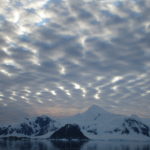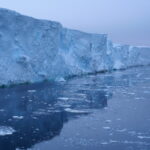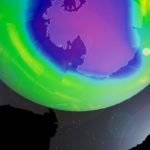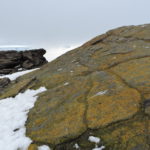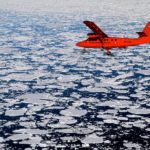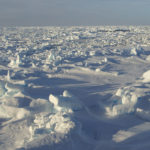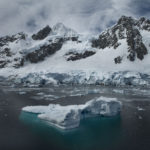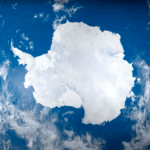Atmosphere, Ice and Climate team
Our ambition
The polar atmosphere-ocean-sea-ice system is highly-coupled and interconnected. Our overriding vision is to understand processes that drive this system and assess responses to our changing world. More robust predictions of the polar system, and how it links globally, are critical for guiding future climate policy decisions. While we focus primarily on the polar regions, we also address associated global questions that are best probed at lower latitudes.

Our research groups investigate (i) climate variability, change and predictability, with primary emphasis on high latitudes and altitudes; (ii) physical processes that control the polar atmosphere and sea ice, including cloud processes, and (iii) chemical processes that control composition of the polar atmosphere, their climate interactions, and how they link to the interpretation of ice core records. Additionally, the team is responsible for maintaining long-term observations of weather, climate and atmospheric composition at our research stations and from a number of remote sites.
Team priorities
Science
- Determine patterns of change and variability in the high-latitude atmosphere. Optimise the use and analysis of sustained, long-term observations of meteorology and composition.
- Atmosphere-ocean-sea ice interactions. Explore the ways in which the polar atmosphere interacts with the polar oceans, cryosphere, upper atmosphere and the global climate system.
- Climate and atmospheric composition. Carry out targeted studies (using both observations and models) of key processes that control polar climate and atmospheric composition, including atmosphere-ocean-sea ice interaction, sea-ice dynamics, clouds, aerosols, atmospheric waves and turbulence.
- Determine the causes of climate change in the polar regions. To what degree can observed change be attributed to human forcings (greenhouse gases, stratospheric ozone depletion), natural forcings (e.g. volcanic aerosols, solar variability) and internal variability (“chaos”)?
- Reduce uncertainty in predictions of polar and global climate and atmospheric composition through improved representation of polar processes in atmospheric, climate and earth system models.
- Apply our polar expertise and assets to address crucial global questions that are best probed at lower latitudes.
Technology, innovation and training
- Use state-of-the-art scientific instrumentation, as well as BAS’s unique polar platforms (airborne and ground-based), to achieve science priorities
- Exploit novel autonomous platforms and instrumentation to open up new possibilities for observations.
- Develop and apply cutting-edge numerical models and data analysis techniques to solve defined science questions.
- Train the next generation of polar atmospheric scientists to tackle key questions in the future.
- Maintain a suite of meteorological and atmospheric chemistry equipment to deliver long-term observations for climate/composition research. Train personnel on the operation and maintenance of this equipment to ensure the best data quality.
Influencing and leading international programmes
- Collaborate with leading UK and international research teams to tackle high impact science questions and drive the research agenda
- Take a leading role in the planning and implementation of polar science programmes through organisations such as the Scientific Committee for Antarctic Research, the World Climate Research Programme and the International Association of Meteorology and Atmospheric Sciences
- Contribute sustained observations to World Meteorological Organisation (WMO) programmes, such as the Global Atmosphere Watch (GAW) and the Global Cryosphere Watch (GCW). Develop sustained observations at BAS stations to meet the requirements of these programmes
Stakeholder engagement
- Produce briefings on policy-relevant science for UK government departments.
- Work with the UK Met Office to determine priorities for meteorological observations in British Antarctic Territory
- Collaborate with instrument manufacturers to develop the systems that we need to deliver our science
Public engagement
- Disseminate our findings, published in the highest-impact journals, through presentations in leading national and international forums
- Participate in BAS media and public engagement programmes and support our early career scientists in their public engagement activities
Antarctic Coastal Winds
Winds along the Antarctic coast are small scale but have global importance. Climate models must have a realistic representation of these winds as they influence ice shelves, sea ice and …Arctic Summer-time Cyclones
The Arctic Summer-time Cyclone Project is a joint project of scientists from the University of Reading, University of East Anglia and the British Antarctic Survey with expertise in atmospheric dynamics, …CRiceS
Sea ice is an integral, changing part of the global Earth system. The polar climate system affects lives and livelihoods across the world by regulating climate and weather; providing ecosystem …DEFIANT
Overview While climate models suggest Antarctic sea ice extent should also reduce in response to rising atmospheric CO2 concentraions, satellite observations reveal that during 1979-2015 the opposite was in fact …MesoS2D
In order to accurately predict impacts of space weather and climate variability on the whole atmosphere we need an accurate representation of the whole atmosphere. The mesosphere (~50-95 km altitude) …Meteorology and Ozone Monitoring
Long-term meteorological and ozone observations and data help determine the causes of climate change in the polar regions. Meteorology Meteorological observations are made regularly throughout the day at Halley and …PolarRES
The Polar regions play a crucial role in balancing the global climate system – with the poles heating up much faster than the rest of the world. Yet, climate projections …Real Projections
Predicting how the climate will change as human activities lead to emission of more greenhouse gases is a global scientific challenge for climate scientists. We use models of the climate …SEANA
Global shipping is undergoing significant changes. In January 2020 the maximum sulphur emission by ships in international waters will reduce from 3.5% to 0.5% by mass, as a result of …SONATA
The Southern Ocean is one of the most important and poorly understood components of the global carbon cycle that profoundly shapes Earth’s climate. It is the primary hot spot for …Southern Ocean Clouds
SOC is a project of the NERC CloudSense Programme The biases observed in climate models over the Southern Ocean in surface radiation and sea surface temperature are larger than anywhere …SURFEIT
Surface Fluxes in Antarctica (SURFEIT) is a BAS National Capability International research programme. Its primary aims are to bring together relevant members of the international scientific community and increase our …ACSIS
Major changes are occurring across the North Atlantic climate system: in the ocean and atmosphere temperatures and circulation, in sea ice thickness and extent, and in key atmospheric constituents such …DRAGON-WEX
DRAGON-WEX (the DRake pAssaGe and sOuthern oceaN – Wave EXperiment) is a NERC funded standard grant between the University of Bath and the British Antarctic Survey. We will implement and …Iceland Greenland seas Project
PI: Ian Renfrew (University of East Anglia) CO-I’s: Tom Bracegirdle, Tom Lachlan-Cope, Alexandra Weiss PDRA’s: Andrew Elvidge (University of East Anglia), James Pope NERC Grant: NE/N009924/1 Project Partners: Robert Pickart …Water Resources of the Upper Indus Basin
The Indus River Basin feeds the world’s largest system of irrigated agriculture, supporting over 300 million people across India and Pakistan. Demand on freshwater in this region is growing, and …ISOL-ICE
PI: Markus M. Frey Co-I’s: X. Yang, R. Mulvaney NERC Grant: NE/N011813/1 The ozone layer shields all land-based life forms from harmful ultraviolet radiation; and indirectly influences the climate at …ICE-ARC
physicists, chemists, biologists, economists, and sociologists from 21 institutes in 11 countries across Europe assess the rapid retreat and collapse of Arctic sea-ice coverMicrophysics of Antarctic Clouds NE
Introduction and Background The largest uncertainties in future climate predictions highlighted by the Intergovernmental Panel on Climate change (IPCC 2007) arise from our lack of knowledge of the interaction of …ABSCISSA
The source of sea-salt aerosols in the Polar Regions appears to be linked to sea ice surfaces, but exact details are unclear. Defining the sources is important given the critical …Orographic Flows and the Climate of the Antarctic Peninsula (OFCAP)
OFCAP is an integrated programme of field observations, analysis and modelling aimed at understanding how the westerly winds in the Antarctic Peninsula interact with the mountains and influence the climate …Joint Airborne Study of the Peninsula Region (JASPER)
JASPER brings together two of the best equipped Polar meteorology instrumented aircraft and teams to study boundary layer meteorology in the Antarctic Peninsula and Weddell Sea. A joint project between …A historic moment: over 1.2 million years of Earth’s climate history captured from an Antarctic ice core
2 October, 2025
Ancient ice from Antarctica, extracted as part of the Beyond EPICA – Oldest Ice project, captures a unique climate record spanning at least the past 1.2 million years. The team …
Historic drilling project finds ice over 1.2 million years old
9 January, 2025
The fourth Antarctic campaign of the Beyond EPICA-Oldest Ice project has achieved a historic milestone this week, by successfully drilling a 2800-metre-long ice core, consisting of ice from the Antarctic …
Antarctic drilling missions seek to understand climate and ice dynamics
12 December, 2024
Over 30 researchers from international institutes are working on ice core drilling campaigns in Antarctica to probe the ice sheet’s behaviour, carbon cycling in the Southern Ocean, and the Earth’s …
Cloud scientists take to the skies to solve climate uncertainty
26 November, 2024
A project looking at how clouds affect climate change in Antarctica starts its second year of field research this month. The Southern Ocean Clouds (SOC) project, which is part of …
Extreme heatwave in East Antarctica caused by record-breaking ‘atmospheric river’
10 January, 2024
Scientists have identified the intricate meteorological drivers that led to an intense heatwave across East Antarctica in from 15-19 March 2022. The heatwave, which affected an area of the size …
Clouds formed with sea salt contribute to Arctic warming
4 September, 2023
Scientists studying Arctic warming have shared new evidence that sea salt aerosols from “blowing snow” play a significant role in forming clouds that reflect solar radiation back to the Earth’s …
Flying campaign to improve climate modelling begins
3 February, 2023
A team of scientists are currently conducting a major experiment over the Southern Ocean that will help to improve climate modelling. The Southern Ocean Clouds project team are performing several …
New funding to predict future sea-level rise in Antarctica
2 February, 2023
Researchers at British Antarctic Survey (BAS) will develop new and ambitious ideas to tackle critical global environmental challenges, such as global sea-level rise from Antarctica, thanks to new funding. The …
Flying campaign to future-proof sea ice measurements
20 December, 2022
An ambitious flying campaign out of British Antarctic Survey’s Rothera Research Station over the Weddell Sea this month (December) aims to calibrate the data collected from two important satellites that …
Funding addresses environmental challenges
27 June, 2022
British Antarctic Survey (BAS) scientists will investigate critical challenges facing the UK, thanks to new funding from the Natural Environment Research Council (NERC). A £47m investment to several UK research …
Study sets course for research on Himalayan waters
22 April, 2022
A new study featuring contributions from British Antarctic Survey (BAS) scientists has identified 100 pressing research questions on climate change and water resources in the Upper Indus Basin (UIB) that must be answered to protect the communities that live there.
Study underway as Antarctic sea ice extent at record level
29 March, 2022
A £5m project funded by the Natural Environment Research Council (NERC) to investigate the complex changes seen in sea ice around the Antarctic begins this month (March 2022) as the …
Deep insight into Arctic from MOSAiC expedition
8 February, 2022
New research papers from the one-year MOSAiC expedition to study the Arctic have yielded new understanding about the region. Hundreds of international researchers are currently analysing observations from the MOSAiC …
Polar medals awarded to BAS staff
31 January, 2022
Three British Antarctic Survey (BAS) staff have been awarded the Polar Medal. The announcement was published last week (Friday 28 January) in the London Gazette. Melody Clark is a molecular …
Grant to understand future impacts on atmospheric prediction
13 January, 2022
A new project to improve scientists understanding of the impact of space weather and climate change on the atmosphere starts this month (January 2022). A team from British Antarctic Survey, …
Improving climate projections in the Polar Regions
29 November, 2021
The Polar Regions play a crucial role in balancing global climate – with the poles heating up much faster than the rest of the world. Yet, climate projections for these …
DEEPICE: Network of young researchers to unveil past climate change in Antarctica
13 October, 2021
A network of international researchers launches a European collaboration this week ( 14 October 2021). This collaboration will train a new generation of scientists to understand how past climate changes …
IPCC: Polar scientists welcome Climate Change Assessment
9 August, 2021
CAMBRIDGE: British Antarctic Survey welcomes the publication of the Intergovernmental Panel on Climate Change (IPCC) Working Group 1 component of its Sixth Assessment Report. This assessment brings together the latest advances in …
New verified temperature record for Antarctic continent
1 July, 2021
The World Meteorological Organization (WMO) has today (1 July 2021) recognised a new record high temperature for the Antarctic continent of 18.3° Celsius on 6 February 2020 at the Esperanza …
New project to understand polar processes in global climate system
24 May, 2021
British Antarctic Survey researchers will work on a new Horizon 2020 project to advance their understanding of polar processes in the global climate system. The CRiceS project, or Climate relevant …
Celebrating International Day of Women & Girls in Science 2021
11 February, 2021
Today is International Day of Women and Girls in Science (11 February), a celebration of women and girls in science led by UNESCO and UN-Women. “International Day of Women and …
Climate scientists uncover 30-year-old temperature record
23 September, 2020
The World Meteorological Organization (WMO) has recognized a temperature of -69.6°C (-93.3°F) at an automatic weather station in Greenland on 22 December 1991 as the coldest ever recorded in the …
Record warming at the South Pole
29 June, 2020
The South Pole has warmed at over three times the global rate since 1989, according to a paper published in Nature Climate Change today (29 June 2020). This warming period was …
Antarctic sea ice loss explained in new study
17 June, 2020
Scientists have discovered that summer sea ice in the Weddell Sea area of Antarctica has decreased by one million square kilometres – an area twice the size of Spain – …
Climate scientists help businesses tackle climate change
26 February, 2020
Climate change could add around 20% to the global cost of extreme weather events by 2040, according to early findings from Cambridge researchers. The findings come from the Cambridge Climate …
Arctic under spotlight at World Economic Forum
20 January, 2020
A team of Arctic scientists – including British Antarctic Survey (BAS) climate scientist Dr Jeremy Wilkinson – are hosting their fourth Arctic Basecamp in Davos this week (20-24 January) at …
Scientists to study methane emissions in North Sea
23 April, 2019
Scientists embark on a three-week flying campaign today (23 April) to study methane emissions from gas fields in the southern North Sea. Using specialised scientific equipment, on board one of …
Antarctic snowfall dominated by a few extreme snowstorms
25 March, 2019
A new study reveals the importance of a small number of intense storms around Antarctica in controlling the amount of snow falling across the continent.
Scientists highlight Arctic at World Economic Forum
23 January, 2019
A team of Arctic scientists – including British Antarctic Survey (BAS) climate scientist Dr Jeremy Wilkinson – are hosting their Arctic Basecamp in Davos this week (23 January) at the …
FEATURED PAPER: Himalayan winds
16 January, 2019
Around one billion people depend on water resources originating from the Hindu-Kush Karakoram Himalayan region, attributable to both rainfall and melting of snow and ice. The wind in the valleys …
Funding to assess shipping emissions and climate hazards
13 December, 2018
British Antarctic Survey (BAS) scientists have been awarded funding to enable them to assess the impact of emissions from shipping and to quantify and manage the risk of climate hazards. …
World Ozone Day – 16th September
16 September, 2018
The 2018 ozone hole began forming in late August and won’t reach its largest for over a fortnight. Already it covers most of the Antarctic continent, an area of 14 …
European wind energy generation potential in a 1.5˚C world
17 May, 2018
The UK and large parts of northern Europe could become windier if global temperatures reach 1.5˚C above pre-industrial levels, according to a new study. This has implications for wind energy …
“Hairdryer winds” cause ice melt during Antarctic winter
3 May, 2018
A new study involving scientists from British Antarctic Survey (BAS) suggests for the first time that warm winds are creating large surface melting of ice shelves in Antarctica during the …
FEATURED PAPER: Record temperature at Signy
19 February, 2018
On 30th January 1982, a record high temperature of +19.8°C was measured at Signy Research Station – a record for any station south of 60°S. In this paper, we examined …
Scientists gather in Davos to highlight Arctic climate change
23 January, 2018
A team of leading Arctic scientists – including British Antarctic Survey glaciologist Dr Jeremy Wilkinson – are gathering in Davos this week at the World Economic Forum (WEF) meeting (23-24 …
New study calls for unified research to understand changing ecosystems
2 October, 2017
A new multidisciplinary study led by scientists at British Antarctic Study (BAS) stresses the need for an integrated approach to understand the effects of climate change on Antarctic marine ecosystems. …
World Ozone Day: 30th anniversary of Montreal Protocol
11 September, 2017
This week (Saturday 16 September), marks the 30th anniversary of the signing of the Montreal Protocol on Substances that Deplete the Ozone Layer. It is one of the most successful …
Study shows ice sheet loss over the last 11,000 years
5 July, 2017
Reporting this week (Wednesday 5 July) in the journal Nature, an international team of researchers led by British Antarctic Survey (BAS) explains that wind-driven incursions of warm water forced the …
Climate change may cause expansion to ice-free areas across Antarctica
29 June, 2017
Ice-free areas in Antarctica could expand by close to 25 per cent by 2100 and drastically change the biodiversity of the continent, research published this week in Nature has shown. …
Storms caused massive Antarctic sea ice loss in 2016
23 June, 2017
A series of unprecedented storms over the Southern Ocean likely caused the most dramatic decline in Antarctic sea ice seen to date, a new study finds. Antarctic sea ice – …
New insight into what weakens Antarctic ice shelves
25 April, 2017
New research describes for the first time the role that warm, dry winds play in influencing the behaviour of Antarctic ice shelves. Presenting this week at a European conference scientists …
FEATURED PAPER: Antarctic cloud physics
7 April, 2017
Observations were made of clouds over the Antarctic Peninsula during the summer of 2010 and 2011 using one the BAS Twin Otter aircraft fitted with a range of atmospheric instruments. …
Signy Island is hottest place in the Antarctic
1 March, 2017
A World Meteorological Organization (WMO) committee of experts announces this week (Wed 1 March) new records for the highest temperatures recorded in the Antarctic Region. The results are part of …
Antarctic sea ice extent lowest on record
16 February, 2017
This year the extent of summer sea ice in the Antarctic is the lowest on record. The Antarctic sea ice minimum marks the day – typically towards end of February …
ANTARCTIC BLOG: Working on the Polar Plateau
15 January, 2017
A new blog post from a team comprising polar atmosphere and ice chemist Holly Winton, analytical chemist Rebecca Tuckwell and atmospheric and glaciochemist Markus Frey who are working on the …
BLOG: Arriving at the Polar plateau
13 January, 2017
A new blog post from atmospheric and glaciochemist Markus Frey who’s just arrived on the Polar plateau as part of the ISOL-ice research project. Read the team’s earlier post here. …
FEATURED PAPER: Atmospheric variability & surface temperatures
22 September, 2016
This paper investigates the impact that the four principal patterns of Southern Hemisphere (SH) atmospheric circulation variability have on Antarctic surface air temperature (SAT): 1) the southern baroclinic annular mode …
Arctic sea ice heading towards second lowest on record
15 September, 2016
This year the extent of summer sea ice in the Arctic is heading towards being the second lowest on record. The Arctic sea ice minimum marks the day – typically …
A recent pause in Antarctic Peninsula warming
20 July, 2016
The rapid warming of the Antarctic Peninsula, which occurred from the early-1950s to the late 1990s, has paused. Stabilisation of the ozone hole along with natural climate variability were significant in bringing about the change. Together these influences have now caused the northern part of the peninsula to enter a temporary cooling phase. Temperatures remain higher than measured during the middle of the 20th Century and glacial retreat is still taking place. However, scientists predict that if greenhouse gas concentrations continue to rise at the current rate, temperatures will increase across the Antarctic Peninsula by several degrees Centigrade by the end of this century.
First signs of healing in the Antarctic ozone hole
1 July, 2016
An international team of researchers has identified the “first fingerprints of healing” of the Antarctic ozone layer, published this week (30 June 2016) in the journal Science.
Carbon dioxide level breached at Halley VI
16 June, 2016
Levels of the greenhouse gas carbon dioxide (CO2) in the atmosphere – which is the leading driver of recent climate change – have reached a milestone at British Antarctic Survey’s …
FEATURED PAPER: Circulation changes off West Antarctica
17 March, 2016
The Amundsen Sea Low (ASL) is a climatological low pressure system located over the southern Pacific Ocean, off the coast of West Antarctica. Atmospheric variability in this region is larger …
FEATURED PAPER: Polar Vortex teleconnection
26 January, 2016
This paper provides new evidence and proposes a new dynamical mechanism for the teleconnection between the two largest jet streams in the northern winter stratosphere – the tropical wind system …
PRESS RELEASE: COP21 Side Event, ‘Climate Change in the Arctic’
1 December, 2015
BAS Organises Side Event for 2015 Paris Climate Conference (COP21) Journalists wishing to arrange interviews with keynote speakers from this session should contact Heather Martin. As world attention focuses on …
NEWS STORY: Arctic sea ice 2015
17 September, 2015
Arctic sea ice 2015 On September 11, the National Snow and Ice Data Centre (NSIDC) reported that Arctic sea ice reached its likely minimum extent for 2015. The minimum ice …
NEWS STORY: Ocean life triggers ice formation in clouds
9 September, 2015
Researchers from the Arctic Research Programme, managed at British Antarctic Survey (BAS), have shown for the first time that phytoplankton (plant life) in remote ocean regions can contribute to rare …
NEWS STORY: Polar ice cores reveal volcanic eruptions
8 July, 2015
Polar ice cores reveal volcanic eruptions that changed human history Researchers find new evidence that large eruptions were responsible for cold temperature extremes recorded since early Roman times A freshly …
NEWS STORY: Ozone hole 30th anniversary
11 May, 2015
30th Anniversary of the Discovery of Ozone Hole This week British Antarctic Survey (BAS) commemorates the 30th anniversary of one of its most important scientific discoveries that affected the world …
NEWS STORY: Live link to the Arctic
1 May, 2015
Digital Explorer launches virtual adventure on the ice at the UK Arctic Research Station The British Antarctic Survey is proud to support Digital Explorer’s second visit to the UK Arctic …
PRESS RELEASE: Mapping the ice from below
24 November, 2014
Underwater robot sheds new light on Antarctic sea ice The first detailed, high-resolution 3-D maps of Antarctic sea ice have been developed using an underwater robot. Scientists from the UK, …
NEWS STORY: BAS to host workshop
13 October, 2014
British Antarctic Survey hosts Chemical Air-Snow-Sea Ice Interaction workshop in Cambridge More than 60 scientists from over 15 countries are attending a workshop in Cambridge this week (13-15 October) to …
NEWS STORY: Sea ice minimum explained
18 September, 2014
Arctic sea ice summer minimum 2014: A scientific perspective The Arctic sea ice minimum marks the day – typically in September – when sea ice reaches its smallest extent at …
NEWS STORY: World Ozone Day
16 September, 2014
Today, 16 September, is the International Day for the Preservation of the Ozone Layer. The date commemorates the signing of the Montreal Protocol, which sought to reduce atmospheric levels of …
NEWS STORY: Icebergs leave their mark
16 June, 2014
Climate related iceberg activity has massively altered life on the seabed Researchers from the British Antarctic Survey have found evidence that climate change has fundamentally altered the way that life …
NEWS STORY: Arctic sea ice trends
13 February, 2014
British Antarctic Survey coordinates Arctic sea-ice investigation Arctic sea-ice cover is retreating at an unprecedented rate. Scientists fear we may see the complete loss of sea ice during the summer …
NEWS STORY: World’s coldest place identified
12 December, 2013
Scientists working at the United States National Snow and Ice Data Center (NSIDC) said this week they have identified the coldest place on Earth using satellite observations of surface temperature. …
NEWS STORY: Scientists contribute to oral history
3 December, 2013
Voices of Science: a new British Library oral history archive A major oral history project to gather the life stories of British scientists has culminated in the launch of a …
NEWS STORY: Tributes to ozone hole expert
13 May, 2013
It is with great sadness the British Antarctic Survey reports that Joe Farman died on Saturday 11 May 2013. He was 82. Joseph Charles Farman CBE, together with colleagues Brian …
NEWS STORY: Halley VI awarded new status
7 May, 2013
Halley VI receives environmental science status upgrade The World Meteorological Organization (WMO) has announced British Antarctic Survey’s Halley VI research station has attained Global Atmosphere Watch (GAW) Global station status. …
NEWS STORY: Storm events link identified
17 April, 2013
Jet stream influences extreme storms A new study of Europe’s extreme storm events reveals that they often occur near the jet stream – the fast flowing air currents that flow …
PRESS RELEASE: Summer melt season extending
28 March, 2013
Summer melt season is getting longer on the Antarctic Peninsula, new data show New research from the Antarctic Peninsula shows that the summer melt season has been getting longer over …
PRESS RELEASE: Air flows explain record low
11 January, 2010
New research sheds light on Earth”s coldest temperatures Results from the first detailed analysis of the lowest ever temperature recorded on the Earth’s surface can explain why it got so …
PRESS RELEASE: Warmer spells detected in ice cores
18 November, 2009
Mysteriously warm times in Antarctica A new study of Antarctica’s past climate reveals that temperatures during the warm periods between ice ages (interglacials) may have been higher than previously thought. …
PRESS RELEASE: Rise in CO2 emissions
17 November, 2009
Fossil fuel CO2 emissions up by 29 per cent since 2000 The strongest evidence yet that the rise in atmospheric CO2 emissions continues to outstrip the ability of the world’s …
PRESS RELEASE: Ozone hole link to sea ice extent
21 April, 2009
Increasing Antarctic sea ice extent linked to the ozone hole Increased growth in Antarctic sea ice during the past 30 years is a result of changing weather patterns caused by …
PRESS RELEASE: Increase in CO2 emissions
26 September, 2008
CO2 emissions are booming Scientists will this week (Friday 26 Sept) announce the annual update on the global carbon figures. They report that CO2 emissions from burning fossil fuels and …
How do we actually know Antarctica is melting? Mass balance explained
30 July, 2025 by Emily Newton
When news broke that Antarctica had gained ice mass between 2021 and 2023, it sparked debate across comment sections worldwide. How could the continent be gaining ice when we’re constantly …
Precipitation at the Third Pole: the race to understand Himalayan rainfall
11 December, 2024 by Emily Newton
Water is one of the pillars of humanity’s survival – and yet there’s still much to explain about the processes that bring water to some of the world’s largest populations. …
BAS celebrates International Day of Women and Girls in Science
11 February, 2022 by Melody Clark
Today, 11 February, is International Day of Women and Girls in Science, a global initiative led by UNESCO and UN-Women. To celebrate, we have asked some of our female staff …
Blog: The only woman in seminars
9 February, 2021 by Amelie Kirchgaessner
British Antarctic Survey scientist Dr Amelié Kirchgaessner shares her journey in polar science for International Day of Women and Girls in Science 2021 (11 Feb). My name is Amelié Kirchgaessner, …
MOSAiC Blog: Approaching RV Polarstern
26 February, 2020 by Markus Frey
Dr Markus Frey is on board Russian icebreaker Kapitan Dranitsyn, making the final approach through the Arctic sea ice to join the MOSAiC expedition on board RV Polarstern. German research icebreaker RV Polarstern is staying …
MOSAiC Blog: Storm on the Barents Sea
3 February, 2020 by Markus Frey
Dr Markus Frey is on board Russian icebreaker Kapitan Dranitsyn, waiting for a weather window to make the journey north to join the MOSAiC expedition on board RV Polarstern. German …
MOSAiC Blog: Sea ice rescue training
29 January, 2020 by Markus Frey
Atmosphere and ice climate scientist Dr Markus Frey is on his way to join the MOSAiC (Multidisciplinary drifting Observatory for the Study of Arctic Climate) expedition. Markus will be using …
PODCAST – Iceworld, Episode 2 – Meteorology
26 November, 2019 by Robert Taylor
November, 2019 In his second Antarctic podcast field guide Rob Taylor talks to Catherine Maguire and John Law from the Rothera Research Station meteorology team. Listen Now Episode 2 Rob …
MOSAiC Blog: Last preparations in Tromsø
18 September, 2019 by Markus Frey
The BAS SSAASI-CLIM team arrived in Tromsø a few days ago to set up equipment onboard of RV Polarstern. On Friday 20 Sep 2019 the German ice breaker will embark …
ISOL-ICE Lab Blog: Continuous Flow Analysis of 1,000 yr old ice at BAS
17 July, 2018 by Lisa Hauge
A new blog from ISOL-ICE project team member Lisa Hauge, who describes recent progress in the lab. Read the team’s earlier blog here. During the last 3 months the ISOL-ICE project has made …
SCIENCE IN THE LAB: From the Polar Plateau to Cambridge
19 October, 2017 by Holly Winton
A new blog from Polar Atmospheric Ice Chemist Dr Holly Winton, who is part of the ISOL-ice research project, explaining the process from fieldwork on the Polar Plateau to laboratory work …
ANTARCTIC BLOG: Working on the Polar Plateau
7 February, 2017 by Markus Frey
Ice core drilling is a large complex operation to firstly get the equipment out into the field, assemble it, drill intact columns of ice and then process the collected ice for analysis. Markus Frey explains.
ANTARCTIC BLOG: Journey to the Polar plateau
20 December, 2016 by Holly Winton
Our journey to the Antarctic Polar Plateau, where we will be spending the next few weeks as part of the ISOL-ICE research project, began on 7 December. We boarded a …
ANTARCTIC BLOG: Ocean meets air #2
4 March, 2016 by Thomas Barningham
Thomas Barningham from University of East Anglia shares his voyage and time at Halley Since my last post, a lot has happened – we have arrived and begun work at …
ANTARCTIC BLOG: Ocean meets air #1
23 December, 2015 by Thomas Barningham
Welcome to my blog. My name is Thomas Barningham and I’m currently in the third year of my PhD at the University of East Anglia. My work aims to understand …
ARCTIC BLOG: Setting foot back on land
27 March, 2015 by Markus Frey
Diary entry: Friday 27 March 2015 Time: 2200 hrs UTC Position: 78° 13′ N / 15° 33′ E Air Temperature: +1.5 °C Wind Speed: 8 knots We made it! After 38 days onboard the …
ARCTIC BLOG: Total solar eclipse
20 March, 2015 by Markus Frey
Diary entry: Friday 20 March 2015 Time: 1200 hrs UTC Position: 81° 44.23′ N / 19° 36.9′ E Air Temperature: −27.4 °C Wind Speed: 14 knots Nature is displaying a magnificent and …
ARCTIC BLOG: Enduring an Arctic storm
18 March, 2015 by Markus Frey
Diary entry: Wednesday 18 March 2015 Time: 2237 hrs UTC Position: 82° 34.7′ N / 22° 43.6′ E Air Temperature: −32.6 °C Wind Speed: 12 knots The storm lasted not even 48 hours, …
ARCTIC BLOG: Climbing to the Crow’s Nest
13 March, 2015 by Markus Frey
Diary entry: Friday 13 March 2015 Time: 1400 hrs UTC Position: 82° 52.1′ N / 21° 15.1′ E Air Temperature: −25.6 °C Wind Speed: 4.9 knots Since more than two and a half …
ARCTIC BLOG: Shimmering lights in the polar night
22 February, 2015 by Markus Frey
Diary entry: Sunday 22 February 2015 Time: 2220 hrs UTC Position: 82° 35′ N / 29° 24′ E Air Temperature: −26.1 °C Wind Speed: 19.3 knots The Norwegian research vessel, …
Variability and Trends of the Amundsen Sea Low since the Early Twentieth Century from Seasonal-Station-Based Reconstructions
8 December, 2025 by Thomas Bracegirdle
The Amundsen Sea is dominated by a quasi-stationary low-pressure region, the Amundsen Sea Low (ASL). ASL variability impacts on regional weather and the basal melting of ice shelves, an important…A long-term shift in flow regimes over the Antarctic Peninsula
4 December, 2025 by John King, Maria Vittoria Guarino, Steve Colwell
Surface warming in the polar regions has important consequences for the stability of the lowest layers of the atmosphere and for atmospheric vertical movement. Here, using ERA5 reanalysis data and…Read more on A long-term shift in flow regimes over the Antarctic Peninsula
Implications of the recent loss of Antarctic sea ice for phytoplankton and summer feeding habitats of salps and krill
27 November, 2025 by Caroline Holmes
Antarctic sea ice showed a profound, step-wise reduction around 2016-2017, but the scarcity of modern time series means that we know very little about how Southern Ocean biota have responded.…The Impact of Mixed-Phase Cloud Processes on Simulating Southern Ocean Clouds and Their Radiative Effect
26 November, 2025 by Thomas Lachlan-Cope
Over the Southern Ocean, atmospheric and climate models have large biases in their radiative fluxes, primarily caused by the representation of supercooled liquid and mixed-phase low-level clouds, both at the…Sensitivity of near-surface marine winds and wind stress in coastal Antarctica to regional atmospheric model configuration
16 November, 2025 by Hua Lu, John King, Thomas Caton Harrison, Thomas Bracegirdle
Near-surface marine winds in coastal Antarctica have global importance, as they affect ocean circulation and sea-ice variability. We test the sensitivities of simulated near-surface winds and wind stress in coastal…Extreme Antarctic Sea Ice Loss Facilitated by Negative Shift of Southern Annular Mode
28 October, 2025 by Caroline Holmes, Thomas Bracegirdle
Antarctic sea ice area exhibited an abrupt decline in 2015–2016, transitioning from a near record maximum state to a then-record minimum state. The underlying drivers are still being studied, raising…Read more on Extreme Antarctic Sea Ice Loss Facilitated by Negative Shift of Southern Annular Mode
Rapid Summertime Sea Ice Melt in a Coupled Numerical Weather Prediction System
13 October, 2025 by Alexandra Weiss
Coupled Numerical Weather Prediction (NWP) models have only recently been implemented for short-term environmental prediction and both challenges and benefits are evident in polar regions. Their simulation of surface exchange…Read more on Rapid Summertime Sea Ice Melt in a Coupled Numerical Weather Prediction System
The PolarRES dataset: a state-of-the-art regional climate model ensemble for understanding Antarctic climate [preprint]
9 October, 2025 by Andrew Orr, Ella Gilbert, Siddharth Gumber, Tony Phillips
Antarctica's weather and climate have global impacts, influencing weather patterns, ocean currents and sea levels worldwide. However, Antarctica is vast and complex, and the atmospheric processes that govern its climate…Influence of various criteria on identifying the springtime tropospheric ozone depletion events (ODEs) at Utqiaġvik, Arctic
7 October, 2025 by Xin Yang
Tropospheric ozone depletion events (ODEs) occurring in the Arctic spring are a unique photochemical phenomenon in which the boundary layer ozone drops rapidly to near-zero levels. However, the criterion for…Multi-frequency altimetry snow depth estimates over heterogeneous snow-covered Antarctic summer sea ice – Part 1: C∕S-, Ku-, and Ka-band airborne observations
2 October, 2025 by Gaelle Veyssiere, Jeremy Wilkinson
The recent alignment of CryoSat-2 to maximise orbital coincidence with the Ice, Cloud, and land Elevation Satellite-2 (ICESat-2) over the Southern Ocean and Antarctica in July 2022, known as the…Multi-frequency altimetry snow depth estimates over heterogeneous snow-covered Antarctic summer sea ice – Part 2: Comparing airborne estimates with near-coincident CryoSat-2 and ICESat-2 (CRYO2ICE)
2 October, 2025 by Gaelle Veyssiere, Jeremy Wilkinson
For the first time, a comparison of altimetry-derived snow depth estimates between dual-frequency spaceborne and near-coincident multi-frequency airborne estimates is conducted using data from the recent under-flight of a CryoSat-2…Radiosonde Measurements and Polar WRF Simulations of Low-Level Wind Jets in the Amundsen Sea Embayment, West Antarctica
1 October, 2025 by Andrew Orr
We show that low-level jets (LLJs) occurred in 11 out of 22 radiosonde profiles in late austral summer over the coastal region of the Amundsen Sea Embayment, with ten of…Why Polar Winter Climate and Processes? [Meeting Report]
1 October, 2025 by Alexandra Weiss, Markus Frey, Romy Hall, Thomas Bracegirdle, Xin Yang
Polar Winter Climate and Processes: Towards Filling Knowledge Gaps in the Understanding of the Coupled Climate System Recordings: Over 110 participants registered for this hybrid workshop, from 18 countries representing…Read more on Why Polar Winter Climate and Processes? [Meeting Report]
Different responses of cold-air outbreak clouds to aerosol and ice production depending on cloud temperature
26 September, 2025 by Floortje Van Den Heuvel
Aerosol–cloud interactions and ice production processes are important factors that influence mixed-phase cold-air outbreak (CAO) clouds and their contribution to cloud-phase feedback. Recent case studies of CAO events suggest that…Precipitation prediction over the upper Indus Basin from large-scale circulation patterns using Gaussian processes
23 September, 2025 by Andrew Orr, Scott Hosking, Kenza Tazi
Water resources from the Indus Basin sustain over 270 million people. However, water security in this region is threatened by climate change. This is especially the case for the upper…Development of new global lake brGDGT-temperature calibrations: advances, applications, challenges, and recommendations
19 September, 2025 by Dominic Hodgson, Stephen Roberts, Tony Phillips
Branched glycerol dialkyl glycerol tetraethers (brGDGTs) are a group of temperature-sensitive membrane lipids found in bacteria that have been widely used in palaeo-temperature reconstruction. Despite recent advances in analytical methods,…Future under sea ice light availability and algal bloom timing from CMIP6 model simulations
17 September, 2025 by Gaelle Veyssiere
Arctic sea ice is projected to thin and reduce in extent significantly over the next century. Both sea ice and its overlying snow limit the amount of light that reaches…Towards Bedmap Himalayas: a new airborne glacier thickness survey in Khumbu Himal, Nepal [in review]
16 September, 2025 by Andrew Orr, David Goodger, Douglas Boyle, Ed King, Hamish Pritchard
Mountain glaciers provide an important service in sustaining river flows for large populations downstream of High Mountain Asia (HMA) but these glaciers are retreating and the future of this water…The Role of the Weather in the Fate of Shackleton’s Endurance
1 September, 2025 by John King
Endurance, one of the main vessels of the Imperial Trans-Antarctic Expedition of 1914–17, became stuck and eventually was crushed by sea ice, sinking to the bottom of the Weddell Sea;…Read more on The Role of the Weather in the Fate of Shackleton’s Endurance
Gravity Wave Variability in the Arctic Mesosphere in Relation with the Stratospheric Polar Vortex
28 August, 2025 by Subir Mandal, Tracy Moffat-Griffin
In this study, we have investigated short-period ( 1 hr) atmospheric gravity waves (AGWs) in the Arctic mesosphere-lower thermosphere (MLT) region during January of 2014, 2015, and 2016. We used…Science Leader
Joint Deputy Science Leaders
![]()
![]()
Watch video
Share this
Featured

Science strategy

Private: Our Grand Challenges for polar science
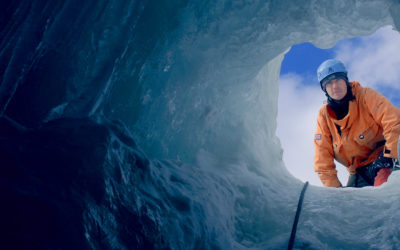
Organisation

